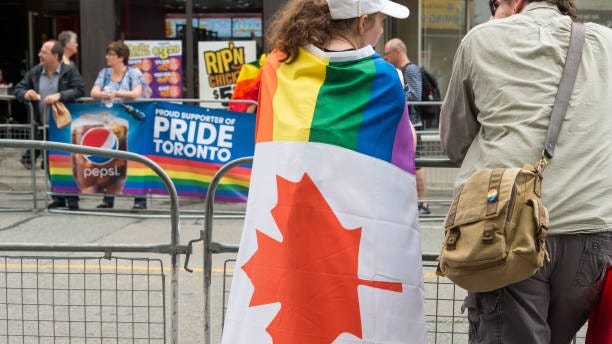Pride parades 2025: Here's when major cities are celebrating − and why

This June marks the 55th anniversary of the first LGBTQ+ Pride march held in the United States.
LGBTQ+ Pride Month, also known simply as Pride Month, is held each June, an observation of queer culture through celebration and protest. Countless communities host Pride marches, demonstrations and parties to honor queer joy, but Pride Month's roots are tied to a darker time.
The first LGBTQ+ Pride march was held in June 1970, just one year after New York City Police officers invaded the Stonewall Inn in Greenwich Village, which resulted in a six-day riot in the neighborhood. Though raids and concurring protests and marches had been ongoing for decades before, the Stonewall Riots proved to be a quintessential moment for the LGBTQ+ community in the U.S.
Here's a closer look at Pride Month's origins and how 10 major U.S. cities are celebrating this summer.
When is LGBTQ+ Pride Month?
Pride Month is the entire month of June.
Pride around the US: Here's when major cities are celebrating
Interested in learning about Pride events in major cities near you?
Here's a look at some of the top Pride celebrations across the country. Parades; live entertainment; food, drink and merchandise vendors; community resources; and family-friendly activities are central to all of these events.
Can't see the above chart in your browser? Visit public.flourish.studio/visualisation/23468078/.
When was LGBTQ+ Pride Month established?
The U.S. federal government declared June as "Gay & Lesbian Pride Month" in 1999 under former President Bill Clinton. The month was expanded to "Lesbian, Gay, Bisexual and Transgender (LGBT) Pride Month" by former President Barack Obama in 2009.
However, Pride Month dates back several decades before it was "officially" recognized by the federal government. The first Pride march was actually held in New York City on June 28, 1970, on the one-year anniversary of the Stonewall Uprising.
Why was LGBTQ+ Pride Month established?
In the early hours of June 28, 1969, New York City police officers raided the now historic gay bar, Stonewall Inn. In New York at the time, homosexuality was considered a criminal offense and it wouldn't be until 1980 that "same-sex relationships" were decriminalized in the state. At the time, Stonewall Inn was owned by the mafia, who didn't care about its clientele and often tipped off law enforcement to "illegal" practices, according to the Library of Congress.
Though the police had raided Stonewall Inn and countless others before, the events of June 28, 1969, known as the Stonewall Riots, spearheaded a six-day uprising for LGBTQ+ rights. Though no deaths were reported as part of the riots, protesters clashed violently with law enforcement, destroying windows and barricades and setting fires.
In addition to the first Pride march in 1970, the Stonewall Riots led to the establishment of advocacy organizations like the Gay Liberation Front (July 1969), Human Rights Campaign (1980), GLAAD (1985) and PFLAG (1973).
It wasn't until June 2003 that intimate, consensual same-sex relationships was decriminalized federally. And in 2015, same-sex marriage was legalized by the Supreme Court.
Today, the Stonewall Inn remains open for customers. The bar is also a part of the greater Stonewall National Monument, which includes the bar and neighboring visitor center, located in Greenwich Village.
Why does a rainbow flag represent Pride Month?
The rainbow Pride flag is easy to spot during Pride Month. There are a few different Pride flags that have been created over the years, but the original flag, created in 1978 by Gilbert Baker featured nine colors: Hot pink for sex, red for life, orange for healing, yellow for sunlight, green for nature, turquoise for magic and art, indigo for serenity and violet for the spirit of LGBTQ+ people, as outlined by the Humans Right Campaign.
Greta Cross is a national trending reporter at Paste BN. Story idea? Email her at gcross@usatoday.com.